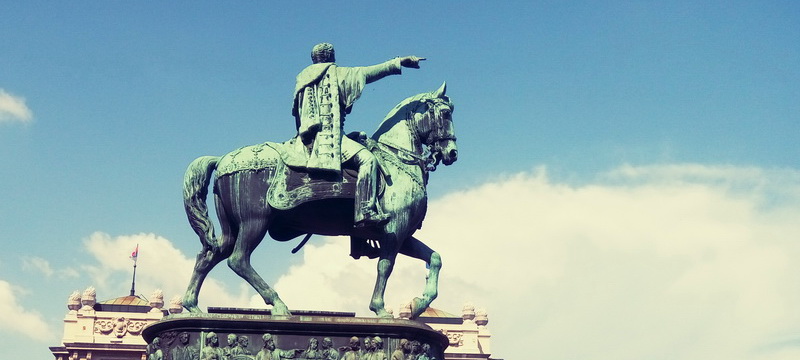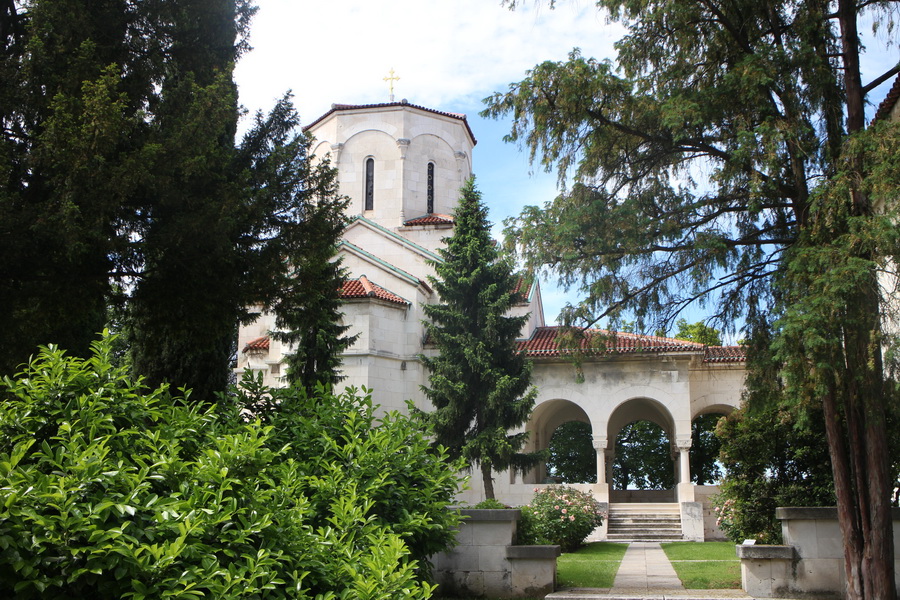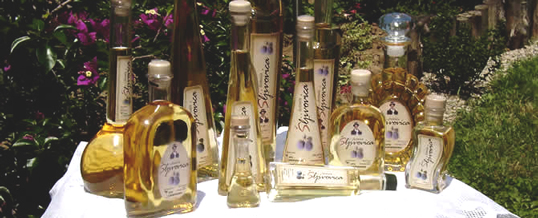Knez Mihailova Street or Prince Michael Street is the main pedestrian and shopping zone in Belgrade, and is protected by law as one of the oldest and most valuable landmarks of the city.
Named after Mihailo Obrenovi? III, Prince of Serbia, it features a number of buildings and mansions built during the late 1870s. One kilometer long Knez Mihailova Street was in 1979 included on the list of Spatial Cultural-Historical Units of Great Importance, and as such is protected by the Republic of Serbia.
The street follows the central grid layout of the Roman city of Singidunum. During Ottoman occupation, there were gardens, drinking-fountains and mosques along the street. In the middle of the 19th century, the upper part of the street bordered the garden of Knez Aleksandar Kara?or?evi?. After the implementation of the 1867 city of Belgrade regulation plan by Emilijan Josimovi?, the street soon gained its current look and architecture. Houses were built there by the most influential and wealthiest families of the Serbian society, most of them merchants.
In 1870, one year after the assassination of Prince Mihailo Obrenovi?, the city authorities officially named the street – Ulica Kneza Mihaila (Prince Michael Street).
Today, Knez Mihailova is a common meeting point for citizens of Belgrade. The street has been named one of the most beautiful pedestrian zones in South East Europe and is a constant buzz of people and tourists. Thousands of people stroll along the street every day as it is the shortest path from Terazije to Kalemegdan park and fortress. The street is home to Serbian Academy of Sciences and Arts (SANU), Instituto Cervantes, Goethe-Institute, Alliance française, as well as many other leading shops and several cafes.
Royal Compound, Belgrade, Serbia
The Royal compound is a complex of residences built for the Kara?or?evi? royal family between 1924 and 1937. The compound is located in the Dedinje neighborhood, a prestigious area of Belgrade, Serbia. It consists of two primary residences: The Royal Palace and The White Palace. The royal compound covers an area of 134 hectares, of which 27 hectares surround the Royal Palace and another 12 hectares the White Palace. The service buildings include kitchens, garages, guards barracks and the office of the Marshal.
The Royal compound is covered with parks of the English garden type, where the vegetation is allowed to grow naturally, whereas around the two palaces the French garden concept of park arrangement is applied, meaning that flowers, bushes and trees have neatly shaped forms and are planted in strictly geometrical order.
The Royal Palace is a grand stucco villa in the Serbo-Byzantine style by architect Živojin Nikoli? and assisted by Russian immigrant architects Nikolai Krasnov and Victor Lukomsky, was built from 1924 to 1929 as an ideal home for King Alexander I and Queen Maria. The King thought that it would be a nice and quiet place, away from the city noise and curious public eyes.
The White Palace located in the same complex as the Royal Palace, the official residence of the Kara?or?evi? royal family. The palace was designed in a NeoPalladian manner inspired by the 18th century English houses such as Ditchley Park. Its interior was decorated with English Georgian and 19th century Russian antiques by the French design firm Jansen, which later decorated the White House during the administration of John F. Kennedy.
The Royal Chapel, which is located within the Royal Compound, is devoted to Saint Apostle Andrew The First-Called, the patron Saint of The Royal Family of Yugoslavia. The church was built at the same time as The Royal Palace and is attached to it through a colonnade with semicircular arches from where there are magnificent views towards northern, western and southern parts of Belgrade, as well as to the terraced rose gardens. It is covered with frescoes painted by Russian painters who traveled around Serbia and copied the frescoes of the most famous Serbian medieval monasteries.
Serbian Sljivovica – Warm Up Your Winter
Sumadija – Famous for Plums & Serbian Sljivovica.
If you would like to warm yourself up during the cold winter time, than Serbia is the right place for you. One of the most picturesque parts of Serbia is Sumadija, a fertile region famous for its production of plums and therefore the Serbian Sljivovica, the national drink of Serbia. It is in domestic production for centuries and plums are the national fruit.
[one_half]
The name (Šljivovica) is derived from Serbian Plum (šljiva-plum) and its products are of great importance to Serbs and part of numerous customs. A Serbian meal usually starts or ends with plum products. Šljivovica is served as an aperitif.
A saying goes that the best place to build a house is where a plum tree grows best. Traditionally, Serbian Sljivovica is connected to Serbian culture as a drink used at all important rites of passage.
[/one_half]
[one_half_last]
[frame style=”modern” image_path=”http://demo.makalu.me/talas/wp-content/uploads/2014/12/plums-for-Serbian-Sljivovica-sl-1.jpg” link_to_page=”” target=”” description=”Plums for Serbian Sljivovica” float=”right” lightbox=”http://demo.makalu.me/talas/wp-content/uploads/2014/12/plums-for-Serbian-Sljivovica-xl-1.jpg” lightbox_group=”1″ size=”two_col_small”]
[/one_half_last]
It is used in the Serbian Orthodox patron saint celebration, slava. It is used in numerous folk remedies, and is given certain degree of respect above all other alcoholic drinks.
Its alcohol is normally around 40%, but some locally produced rakia can reach 55-65%. The prepe?enica is double distilled rakia, the alcohol content may exceed 70%. Its most common form, šljivovica is made of plums, but it is also produced from grapes, peaches, apricots, apples, figs, and quinces. Plum rakia or Serbian Sljivovica can be further mixed after distillation with other ingredients, such as herbs, honey, cherries or nuts. Rakia is specialty in Serbia.
Rakia is normally colorless (unless herbs or other ingredients are added). Some forms of rakia are kept in wooden barrels (oak or mulberry), which gives them a special flavor and amber color. It is served in typical glasses called ?okanj?i? or unu?e (from 3 to 5 cl). It is both part of history and tradition in the country and among Serbs across the world. Every Serb is accustomed to Serbian Sljivovica.
Cheers and do not forget to share this post!




